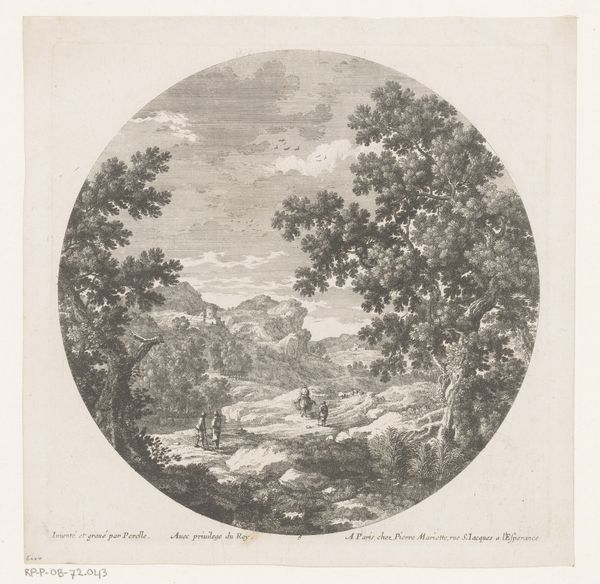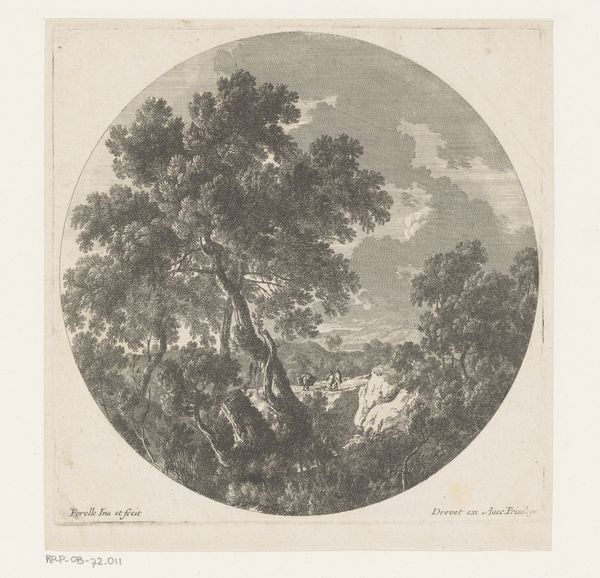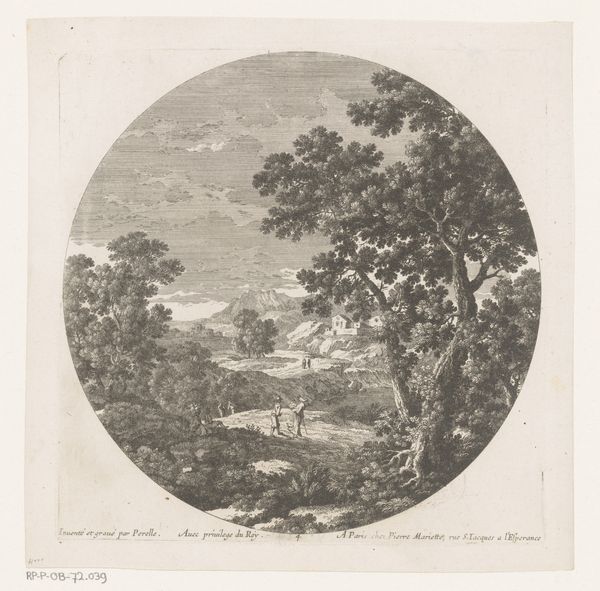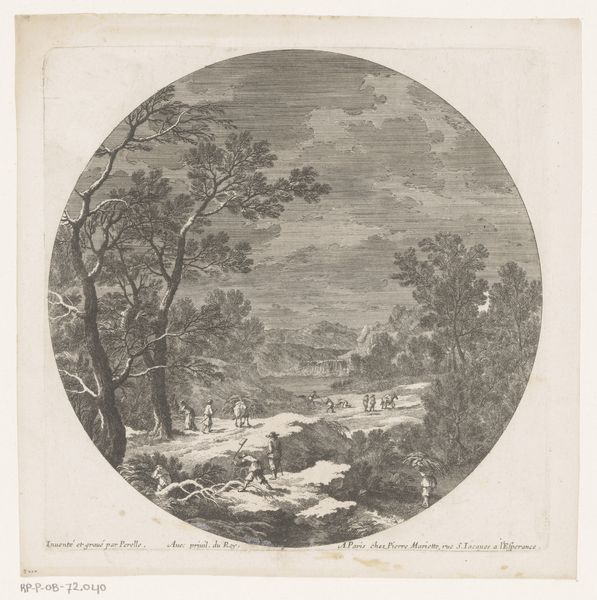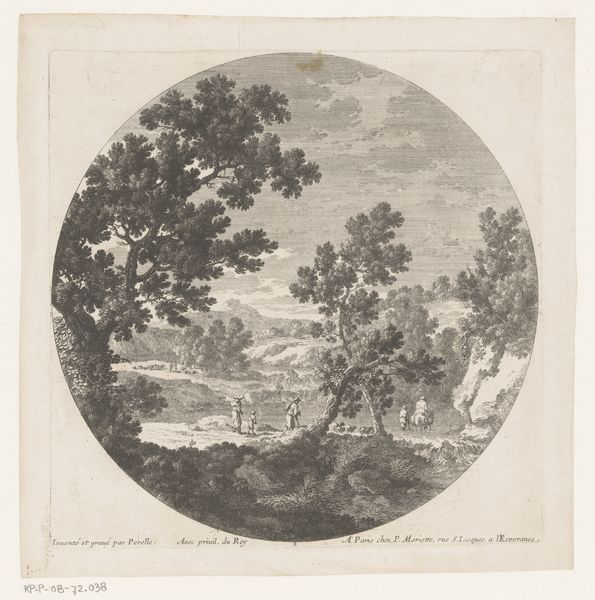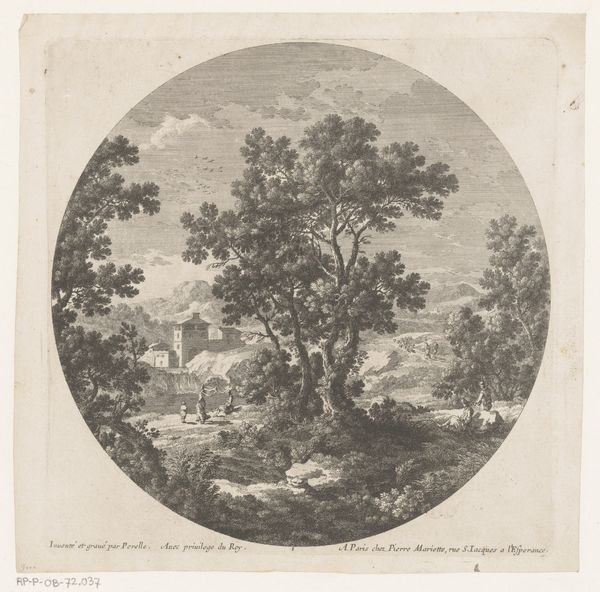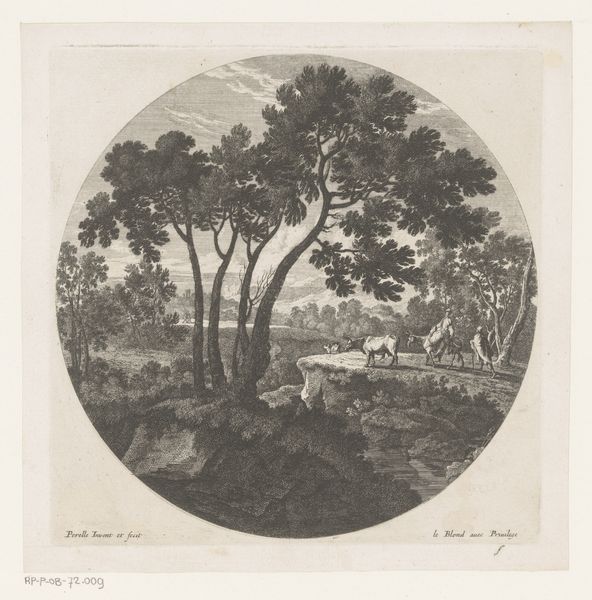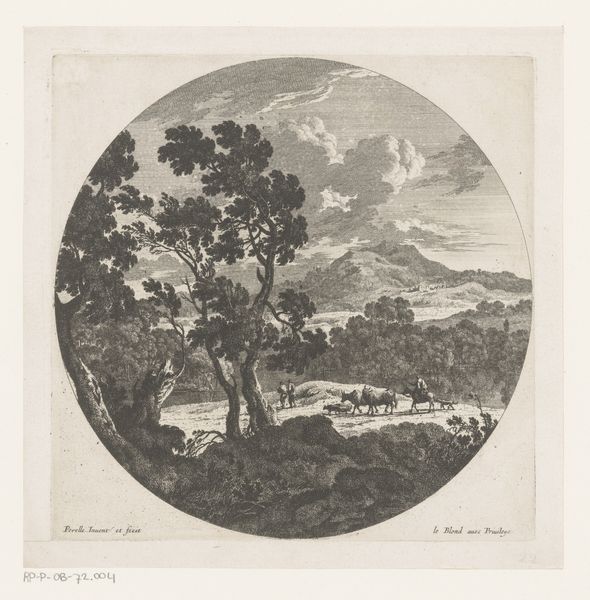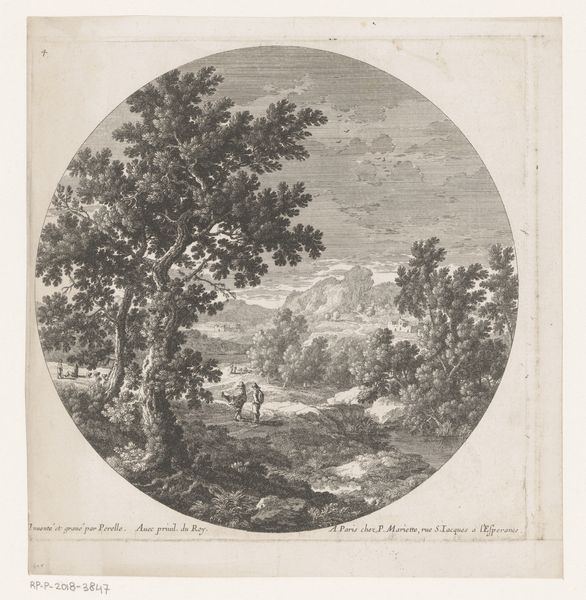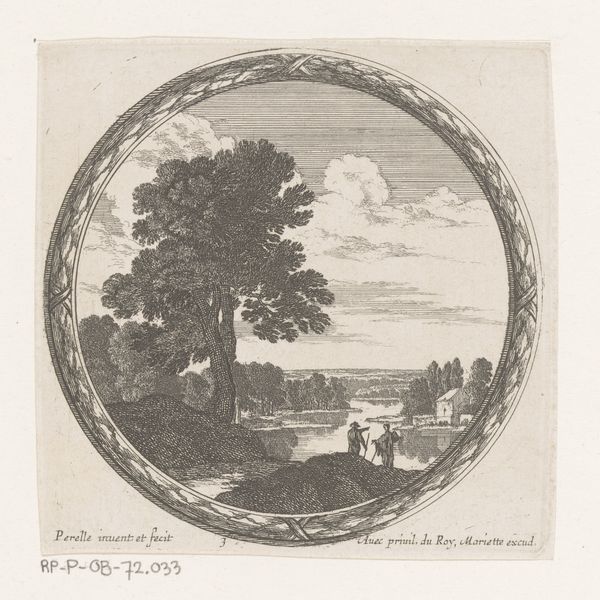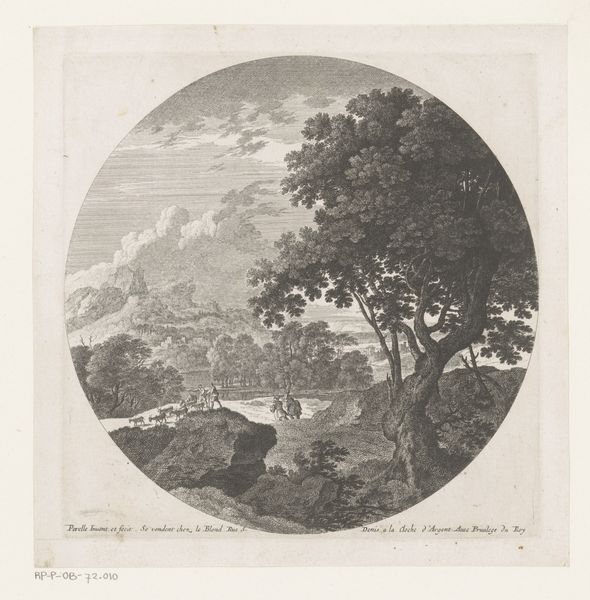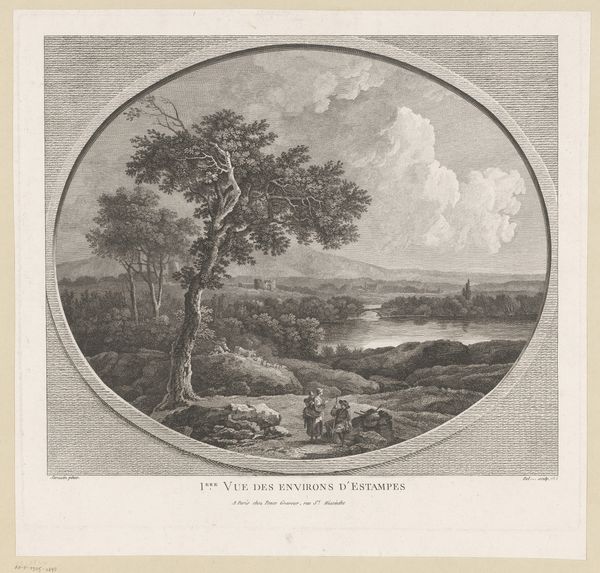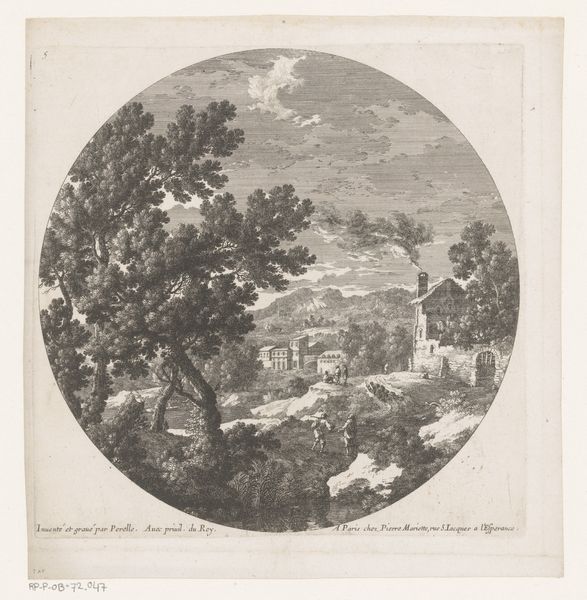
print, etching
#
aged paper
#
light pencil work
#
baroque
# print
#
etching
#
old engraving style
#
landscape
#
form
#
ink colored
#
line
#
genre-painting
Dimensions: height 216 mm, width 214 mm
Copyright: Rijks Museum: Open Domain
Curator: This print, "Landschap met figuren bij stenen brug", which translates to "Landscape with figures by a stone bridge," is attributed to Nicolas Perelle and was created sometime between 1620 and 1666. It's an etching, a printmaking technique that allows for fine lines and intricate details. Editor: My initial impression is quiet contemplation. The circular composition feels like looking through a lens into another world, one of gentle hills and rustic travel. The muted tones add a sense of history. Curator: The circle itself is significant. Circular frames, also known as 'tondo,' often represented wholeness or idealized scenes, reflecting a harmonious relationship between humanity and nature. Look at how the figures are integrated into the landscape—they are part of, not separate from, the natural world. Editor: Yet the 'natural world' in art is rarely neutral. We can't ignore that idealized landscapes like these, emerging in the Baroque period, often served the interests of the elite, who used representations of land to reinforce social hierarchies. Who had access to this 'whole' you describe? Curator: That’s a fair point. There's an undeniable sense of cultivated leisure embedded within these scenes, evoking ideals of harmony between man and nature. The bridge itself can be a powerful symbol representing connection and passage, both physically and metaphorically. Editor: Indeed, a bridge to where, exactly? Were the paths it opened available to everyone, or only to certain groups defined by class or social standing? The print offers no direct answers, yet the question lingers because, at the bottom, we see the words, "le Blond avec privilege." Curator: Those words acknowledge that privilege, specifically the right to publish and profit from this image. The phrase brings our attention back to the creator, who possessed specific resources that granted them the cultural platform to create an aesthetic object to start. Editor: So, perhaps "harmony" isn't the only reading here. While Perelle certainly creates a visually pleasing scene, we should consider whose experience it reflects, and whose is left out of the frame, as we navigate its representation of nature and society. Curator: Precisely. Recognizing these elements invites a fuller understanding of the piece. The image reminds us that all art is in conversation with power. Editor: Yes. Understanding those conversations makes art resonate even more powerfully.
Comments
No comments
Be the first to comment and join the conversation on the ultimate creative platform.
